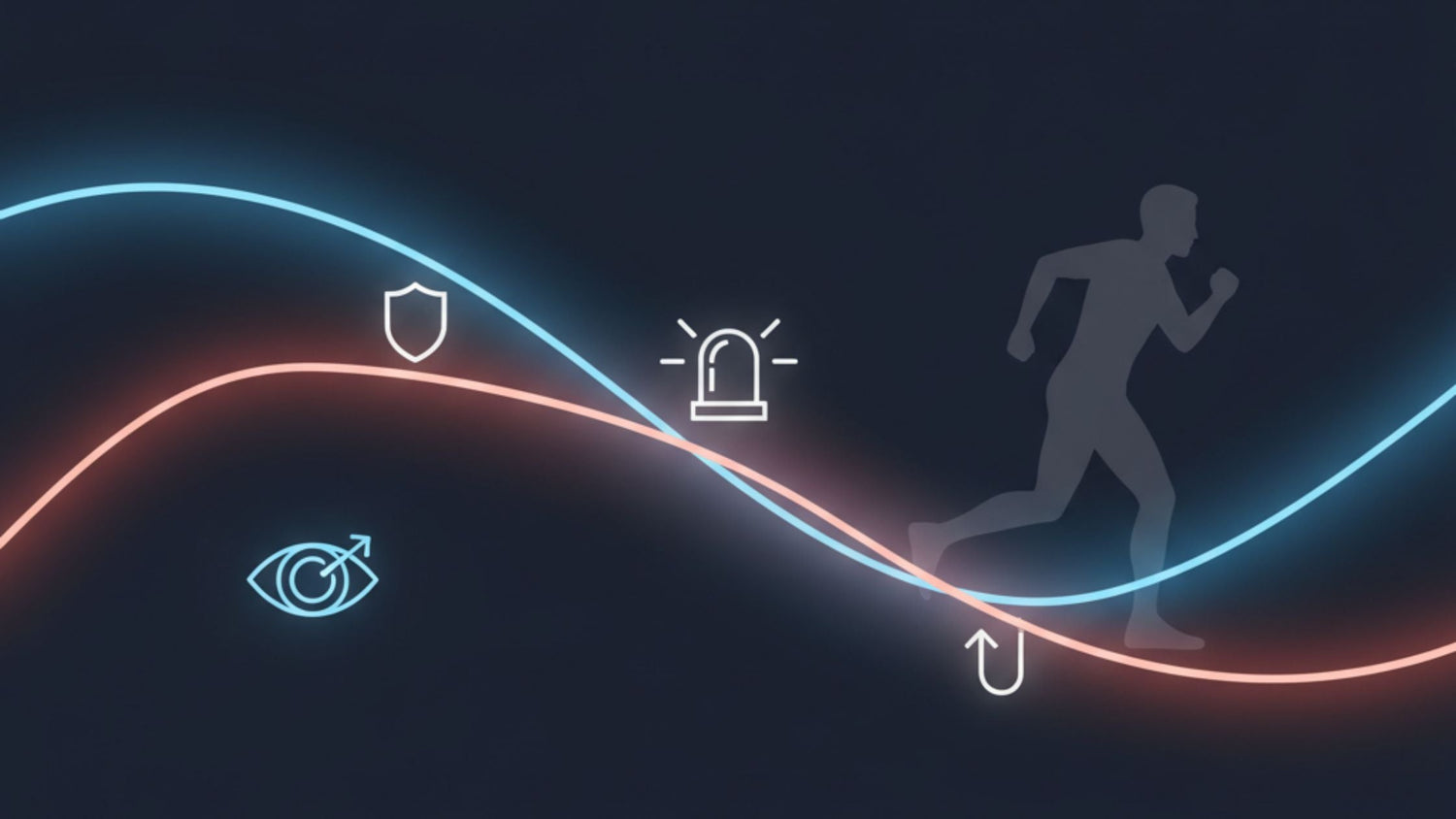When danger strikes, our bodies often don’t do what we expect. We imagine we’ll fight back or run but in many real situations, people simply freeze. It’s not weakness. It’s biology.
Understanding why this happens and how to counter it can make all the difference in staying safe.
Why We Freeze
The “fight, flight, or freeze” response is our body’s built-in survival system. When the brain detects danger, it floods us with stress hormones like adrenaline and cortisol. Sometimes, instead of reacting, our nervous system shuts down movement temporarily.
This can look like hesitation, paralysis, or even silence but it's the body’s way of protecting itself by playing still until it decides what to do next. Unfortunately, in a real-world threat, that pause can cost precious seconds.
Training the Mind to Respond
Freezing is automatic, but with awareness and preparation, you can retrain your response.
Here’s how:
-
Visualise your reaction: Imagine possible scenarios being followed, approached suddenly, or hearing footsteps behind you. Mental rehearsal conditions your body to act faster.
-
Practice small actions: Keep your self-defense tools in familiar, easy-to-reach spots. The goal is muscle memory so your hand knows what to do before your brain catches up.
-
Use your voice: Yelling for help or shouting “STOP” breaks the freeze cycle and signals to both yourself and others that you’re in control.
How a Personal Safety Alarm Helps You Break the Freeze
Sometimes, all you need is one simple action - press, pull, or activate.
That’s where a personal safety alarm makes all the difference. Instead of panicking, you redirect that energy into a single, instinctive move.
-
BoomBird Pebble:
Ultra-compact. Always ready.
Pebble is perfect for teens, college students, and anyone new to city life who wants quick, no-fuss protection that fits into daily routines.
Its 130dB siren and strobe light are designed to instantly draw attention during emergencies, all in a keychain-sized form that clips on and blends in.
Light to carry. Loud when it counts.
-
BoomBird Echo:
Rechargeable. Reliable. Refined.
Echo is a long-lasting safety alarm built for working professionals, solo travelers, and everyday users.
It features a 120-minute siren, LED flashlight, and a premium brass carabiner for secure attachment. Whether you’re commuting or walking late, Echo offers durable, dual-mode protection with sound + light that’s ready whenever you are.
-
BoomBird Aero:
Built for movement. Designed for visibility.
Aero is the go-to for runners, joggers, and commuters who want to stay safe and seen.
Its continuous LED light ensures visibility in low-light environments, while a 130dB alarm + strobe light activates in emergencies. The magnetic clip keeps Aero secure on waistbands, straps, or bags giving you the confidence to move freely and stay protected.
These alarms don’t replace courage, they trigger it. The sound shocks your system into movement, helping you overcome the freeze response and regain control.
Self-Defense Tools that Support Preparedness
A personal safety alarm works best as part of a broader plan. Other self-defense tools for women like pepper spray, a kubaton (BoomBird Spike), or a discreet monkey-fist keychain ( BoomBird Orb) help extend your options if the situation escalates.
But your first defense is action. The faster you act, the safer you stay.
Final Thoughts
Freezing in danger doesn’t mean you’re powerless. It means your body is trying to protect you.
With preparation, practice, and the right self-defense tools, you can turn hesitation into action.
Carry confidence. Carry readiness. Carry BoomBird - your sound of safety when silence isn’t an option.
FAQs
Q1. What is the ‘freeze response’ in self-defense situations?
The freeze response happens when your body feels overwhelmed by danger and temporarily shuts down movement. It’s a natural survival mechanism, not a sign of weakness.
Q2. How can I overcome freezing in emergencies?
Train your body through visualization and practice. Keep your self-defense tools like a personal safety alarm or pepper spray, easily accessible so your reaction becomes automatic instead of delayed.
Q3. How does a personal safety alarm help during danger?
A loud alarm like the BoomBird Pebble, Echo, or Aero activates instantly with one pull or press, breaking the freeze response and drawing attention from others nearby.
Q4. Which BoomBird alarm is best for me?
Each BoomBird alarm is designed with different lifestyles in mind:
-
Pebble is best for teens, college students, or anyone new to city life who wants a compact, keychain-style alarm that’s easy to carry every day. It’s quick, discreet, and powerful.
-
Echo suits working professionals, solo travelers, and commuters who need a rechargeable alarm with both light and sound. It’s built to last through the day and attaches securely with a brass carabiner.
-
Aero is ideal for runners, joggers, and people on the move who want to stay visible and protected. With a continuous LED light plus a siren, it’s perfect for low-light environments and outdoor routines.
Still unsure? All three offer 130dB sound for emergencies so choose the one that fits your lifestyle best.
Q5. Are self-defense tools legal for women to carry in India?
Yes, non-lethal self-defense tools like personal safety alarms, pepper sprays, and kubatons are legal to carry across India for personal protection.





